Textile Fabric Types – different types of fabrics and their patterns
Types of fabrics with pictures by usage for dresses, clothing, by the type of fabric materials used.
Generally, a set number of yarns are used for the formation of fabrics. Also, a number of techniques are used for producing fabrics such as weaving, knitting, and felting. The type of fabrics varies by the fibers, the fabric formation techniques, machinery used for producing them, and finishing techniques. Fabrics can also be made differently based on the application.
-
Oxford Fabric
![Oxford Fabric]() Woven Fabric
Woven Fabric
Oxford fabrics are made with loosely constructed weaves such as rib weaves, basket weaves, and half basket weaves out of soft fine yarn. Since basket weave is a loosely constructed weave, the fabric is porous. Fine and closely packed warp and coarser weft make the fabric lustrous. It is one of the most popular shirt fabrics. -
Percale Fabric
![percale-fabric]() Woven Fabric
Woven Fabric
Percale Fabrics are soft and crisp plain weave fabrics made with rich colours (with low-impact dyes) and sophisticated prints often used for bed covers. -
Plain Fabric
![Plain Weave Fabrics]()
Plain weave fabric, by Abby Lanes Specialty Fabric
Plain fabrics are well known for their soberness and long-lasting durability. Clothing made out of plain fabric can simply be termed as the most impressive and exclusive range of clothing available today. With the available different varieties of plain fabric, the choice is endless. Plain fabrics are also well known for their durability and cost-effectiveness.The clothing made using plain fabric is totally capable of impressing absolute anybody with its unique qualities and aesthetic appeal. A quality that along with its comfort, plain fabric clothes are extremely popular for leisure wear. Among the vast accumulation of available fabric, the plain fabric is most popular fabric. -
Pointelle Knit Fabric
![pointelle-knit]() Knitted Fabric
Knitted Fabric
Pointelle is a type of double knit fabric. The fabric has patterned miss stitches. The fabric has looked like lace, with holes made by these transferred stitches. The feminine look of the fabric makes it ideal for women’s tops and kids wear. -
Poplin Fabric
![Poplin Fabric]() Woven Fabric
Woven Fabric
Poplin fabrics plain woven horizontally ribbed fabrics. Poplin fabrics made of Polyester, Cotton, and its blends and the ribs are heavy and prominent as coarse weft yarns are used. Poplin fabrics are used for jackets, raincoats, shirts etc. -
Purl Knit Fabric
![purl-knit]() Knitted Fabric
Knitted Fabric
Purl Knit Fabrics look the same on both sides of the fabric. Many attractive patterns and designs can be created with the purl stitch. It is often used in the manufacture of bulky sweaters and children’s clothing. The production speed is generally slow with Purl knits.Purl Knit is made by knitting yarn as alternate knit and purl stitch in one wale of the fabric. The fabric has alternate courses of knit stitch and purl stitch. The fabric is reversible and identical on both sides of the fabric. The fabric does not curl and lies flat. It is more stretchable in length direction.
-
Quilted Fabric
![Quilted Fabric]()
Quilted Fabric, by PublicDomainPictures Woven Fabric
Quilting is the art of covering the fabrics for frontal and back, both the sides. The fabrics composed by the sides are generally said to be the quilting fabric. Quilted fabrics are generally made for products like bags, clothing, and mattresses. Quilted fabrics can blend any of the material like cotton, polyesters, silk and many more including the wool.Quilted fabrics have been in the daily uses since ages. With the time, the quilted fabric has been innovated and modernized in its composition and designs as well. Quilted fabric is also available in countless colours and shapes. Especially, the variety of quilted fabric can be witnessed in the jackets and mattresses. -
Raschel Knit Fabric
![raschel-knit]() Knitted Fabric
Knitted Fabric
Raschel knits are produced from spun or filament yarns of different weights and types. Most raschel knits can be identified by their intricate designs, the open-space look of crochet or lace, and an almost three-dimensional surface effect design. -
Reflective Fabric
![Reflective Fabric]() Specialty Fabric
Specialty Fabric
Reflective fabric is the nicest instance of the expanded usability of the fabrics. This has been all possible just because of the continuous innovation in the science field. Reflective fabric is known for their ability to reflect the light to the farthest distance possible. That is why; reflective fabric is used in countless usability, few of them are listed below:- In the streets: the reflectors and the alerts are made up of the reflective fabric. It is generally red in color as red has the largest ability to reflect. Also, it can be visible from the very long distance that makes the traffic flow smoothly. Especially in the night vision, reflective fabrics are proven to be the boon.
- Security: life jackets are made of reflective fabrics. Also, other apparels are made by the reflective fabrics. Reflective fabrics help in to notify the person in the crowd or any kind of situations. Coastguards and even police sometimes have their dresses made up of the reflective life jackets.
There are many another numerous usability of the reflective fibres, making it the finest fabrics that are great for durability and usability as well.
-
Rib Stitch Knit Fabric
![rib-knit]() Knitted Fabric
Knitted Fabric
Rib Stitch Knits have stitches drawn to both sides of the fabric, which produces columns of wales on both the front and back of the fabric. Rib stitch produces fabrics that have excellent elasticity. Rib knits are used for the “ribbing” which is usually found at the lower edges of sweaters, on sleeve cuffs, and at necklines. The Rib-knit fabric is made by knitting yarn as alternate knit stitch and purl stitch in one course of the fabric. The fabric has alternate wales of knit and purl stitches. It is reversible fabric, as they look identical on both sides of the fabric. They may be made with both flat and circular knitting machines. -
Satin or Sateen Fabric
![Satin Fabric]()
Satin Fabric, by shaireproductions.com Woven Fabric
Satin/Sateen fabric is also said to be the most elegant fabrics. The reason behind is its astonishing looks and smooth surface. Satin fabric is used in a variety of apparels like a blouse, panties, gowns, and many other kinds of clothing. Satin fabric is used for bed sheets, curtains, and decorative purposes. The glossiness of the satin fabric really makes the material high class. At top of that, satin fabric is availed in multifarious color options like black, red, green, purple, blue and etc.Satin fabric is generally composed of silk or rayon and that is why it is so smooth. Also, satin is very light and delicate and are manufactured with a great deal of care and attention. Satin fabrics need a fine set up of manufacturing and processing unit as each and every strand of the satin fabric must be well knitted. -
Shantung Fabric
![Shantung Fabric]() Woven Fabric
Woven Fabric
Shantung is plain-woven fabrics made out of Silk and fibers similar to Silk. The fabric is made with slub yarns in order to create rib effects along the weft direction and has a rough texture with sheen. Shantung fabrics are used for bridal gowns, dresses, etc. -
Sheeting Fabric
![Sheeting Fabric]() Woven Fabric
Woven Fabric
These are primarily used for bed coverings. They are medium weight, closely woven fabrics woven either in plain or twin weave. Sheeting fabrics are made in different widths. High-quality cotton sheetings are made in plain weave with a width of 64″ x 58″ and in a twill weave with a width of 60″x72″. -
Sliver Knit Fabric
![sliver-knit]() Knitted Fabric
Knitted Fabric
The Sliver Knit is Pile jersey fabric. Unlike Velour fabric, Sliver knit fabric is characterized by a longer pile on the fabric surface. It is made of special circular knitting machines in which the surface fibers imitating fur are attached to the fabric, by means of knitting sliver along with base yarn making the fabric. Sliver knit fabrics have longer and denser piles on the fabric surface than other pile jerseys. Animal printed sliver knit fabrics are popularly used as imitation fur fabrics. They are more popular than fur as they are light, more stretchable and do not require special care for storage. They are widely used in making jackets and coats. -
Taffeta Fabric
![Taffeta fabric]()
Woven Taffeta Fabric Woven Fabric
Taffeta fabric is a crisp, soft and smooth plain woven fabric with slight sheen manufactured out of different fibers like rayon, silk or nylon. Taffeta fabric is widely used in the manufacturing of women’s garments. The taffeta fabric has a unique rippled or wavy pattern which exhibits similarity to a water stain or mark, with dull and lustrous areas that reflect light differently.The word ‘Taffeta’ has its origin from Persia, and means “twisted woven”. It is generally made with a plain weave, fine warp yarns, and heavier filling yarns. A good quality taffeta fabric represents the artwork in an optimum manner. -
Stretch Fabric
![Stretch Fabric]() Speciality Fabric
Speciality Fabric
Stretch fabric is a fabric referring to the normal fabric, which stretches in all four directions. Simplifying the construction of clothing stretches fabrics are commonly used in swimsuits. They were originally being used in the mid-1980s by a large number of fashion designers. Entering the mainstream market in early 1990, Stretch fabrics are widely used in sportswear.Sometimes Stretch fabric is also termed as Stretch woven fabric when it is blended with a stable fibre of cotton, wool or synthetic. When it comes to talking about stretching, then Stretch fabric is very easy to Stretch in one or both directions presenting the traditional look and lot of comfort. Stretch fabric has better shape retention and is wrinkle resistance because of which they are more comfortable to wear.
-
Tartan Fabric
![Tartan Fabric]() Woven Fabric
Woven Fabric
Tartan is a lightweight plain weave with a pattern consisting of criss-crossed horizontal and vertical bands in multiple colours often used for upholstery to home furnishings. -
Terry Knitted Fabric
![knitted-terry]() Knitted Fabric
Knitted Fabric
Knitted Terry is piled jersey fabric made with a special attachment in regular circular knitting machines similar to woven fabrics. The fabric has loops on the fabric surface. The fabric is made of two sets of yarns, in which one set of yarn makes the pile, while the other set of yarn makes the base fabric.Knit terry is softer, more flexible and is more comfortable than woven terry fabrics. However, they are not firm and durable as woven terry. Owing to its softness and absorbency, it is widely used in beachwear, towels, bathrobes etc.
-
Terry Cloth
![terry towels]()
Terry Towels, by Alexas_Fotos Woven Fabric
Terry Fabrics generally used for towels (commonly known as terry bath towels) is a woven fabric, usually made of Cotton or a blend with a synthetic fiber and has a loop pile on one or both sides. The loops may cover the entire surface or may form stripes, cables, checks, or other patterns.It is observed that original terry weaving was likely the result of defective weaving. The name “terry” comes from the French word “tirer” which means to pull out, referring to the pile loops which were pulled out by hand to make absorbent traditional Turkish toweling.The classification of towels can be made according to weight, production, pile presence on fabric surfaces, pile formation, pile structure, and finishing. Warp knitted terry cloth is manufactured on a Raschel warp knitting machine, using three sets of warp yarns.
Yarns which are used in terry towels are high absorbency, high wet strength, and ability to dye well, good color fastness wash-ability, soft hand, and hypoallergenic, low cost, and easy availability. Cotton is generally used as pile yarn in warp knitted terry cloth because of its excellent absorbency.
-
Ticking Fabric
![ticking-fabric]() Woven Fabric
Woven Fabric
Ticking is a tightly woven fabric made with cotton or linen fibers popularly known for its durability traditionally used for pillows and mattresses -
Tissue Fabric
![Tissue Fabric]() Woven Fabric
Woven Fabric
It is a fine fabric either made of silk or man-made fibre. They are characteristically interwoven with gold or silver threads. It is produced in rich colours and they are used as women’s dress material, sarees etc. -
Tricot Knit Fabric
![tricot-knit]() Knitted Fabric
Knitted Fabric
Tricot knits are made almost exclusively from filament yarns because uniform diameter and high quality are essential yarn characteristics for use with the very high-speed tricot knitting machines. Fabrics constructed by the tricot knitting machine are usually plain or have a simple geometric design. The front surface of the fabric has clearly defined vertical wales, and the back surface has crosswise courses. -
Velour Knitted Fabric
![Knitted-Velour-knit]() Knitted Fabric
Knitted Fabric
Knitted Velour are Pile jersey fabrics having soft protruding fibers on the fabric surface. Like knit terry, they are also made of an additional set of yarns making pile loops on the fabric surface. However, in Velour, these pile loops are sheared evenly and brushed. It may be dyed and generally available with solid colors. They are used in luxurious apparels like jackets, blouses, dresses etc. -
Velvet Fabric
![velvet fabric]()
Velvet fabric, by Katelin Elliott Woven Fabric
Velvet is one of the smoothest and softest amidst all the other kinds of fabrics. Velvets are specially manufactured and process because of its distinctive properties.Velvet fabrics are used in a variety of appliances like clothing including trousers, shirts, and many more. Also, velvet fabric is used in bed sheets, covers, curtains and etc. Velvet fabric is no less than silk in any assessments whether be glossiness or be the unending glaze. Velvet fabric, due to its high-class looks and price viability has made it the most preferred fabrics.In the modern times, velvet fabrics are availed in the multifarious designs and colors. And also are stronger and elastic than the previous times. The newer velvet fabrics need less maintenance and can be easily washed and dried. Use of modern innovations in the composition of the velvet fabrics has made it more easily accessible to the common masses.
-
Voile Fabric
![viole-fabric]() Woven Fabric
Woven Fabric
Viole is a plain woven fabric with the crisp finish made out of various fibers and mainly with Cotton. Voile uses highly twisted, finely combed yarns and products such as blouses and dresses are made with it. -
Warp Knitted Fabric
![warp-knit]() Knitted Fabric
Knitted Fabric
Warp knitted fabrics are made in a special knitting machine with yarns from warp beam. Unlike weft knits, they are knitted from multiple yarns, with yarns forming loops in adjacent wales. The fabric may be identified with a pick glass. The face side of the fabric has slightly inclined vertical knitting loops whereas the backside of the fabric has inclined horizontal floats. They do not ravel. Warp knit fabrics are constructed with yarn loops formed in a vertical or warp direction. All the yarns used for a width of a warp knit are placed parallel to each other in a manner similar to the placement of yarns in weaving. The fabrics that are made of great quality with the technique are generally made with Tricot and Raschel knits. -
Whipcord Fabric
![whipcord-fabric]() Knitted Fabric
Knitted Fabric
Whipcord is a strong worsted or cotton fabric made of hard-twisted yarns with diagonal cord or rib. Whipcord is very much like gabardine, but the yarn is bulkier and much more pronounced and are very durable, rugged and stands hard usage.
Download Type of Fabrics PDF File




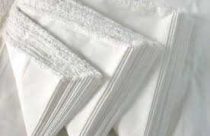

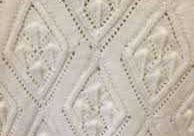




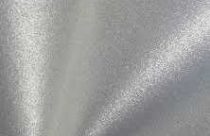

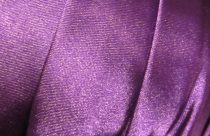


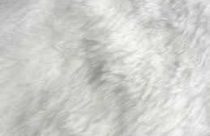
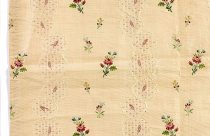
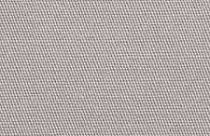


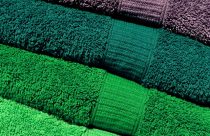


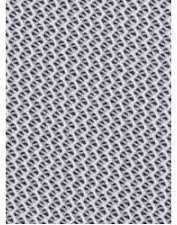

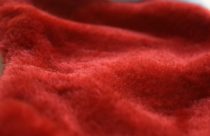

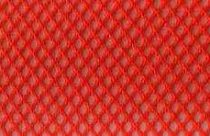
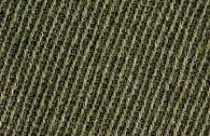
I thoroughly enjoyed reading this article. It describes this subject very effectively. I am really enjoying the blog and will bookmark it! Keep writing interesting articles! Thank you for sharing this informative blog.
Sew Banana is the largest online fabric store in the UAE providing creators and sewists with the widest selection of high-quality fabrics at great prices.
Our fabric in duabi
contains a wide range of variety. Contact Us on +971527779631
Note that while I use the word fabric, some people refer to fabric as cloth, material or textiles. Owing to its exquisite and fine texture, silks have many specialized applications in the clothing world. https://www.marketing-lists-direct.com/online-count-system/
Nice dresses, amazing collection & I am keep watching your blog.
Keep it up and visit my blog too!
Pakistani Designer Dresses
Textile
These all are trusted and leading companies in surat which can be helpful to guide reports of Top Fabrics and Textile products companies from Surat City. The silk manufacturing companies in Surat are at all-time high levels.
Double Bed Blanket
Quilts can be used for Often antique quilts are used to make doll clothing or reupholster furniture. something from mattress protecting to wall decorations. The versatility of quilts additionally lends itself. made from down feathers because of its usefulness as a thermal insulator.
Excellent post, I hope it will helpful to me
Adamjee EnterpriseVery nice post…
https://advancetextile86.blogspot.com
This is a very powerful article. Almost all different types of fabric are described here. It will be very helpful for those who are learning or working in the textile sector. Thanks a lot for this wonderful article.
thnkyou for sharing this blog types of fabrics
The article is crisp and well written . Find information about suppliers, manufacturers, wholesalers selling Cotton fabric from different location across India at MSME Global Mart, B2B Portal of NSIC, A Government of India Enterprise.
Great posts! I am actually getting ready to across this information, is very helpful my friend. keep it up and thanks for it this time to take advantage of
China Double Muslin Pricelistfor more details.Thanks for sharing information on these beautiful
fleece Fabrics.Another type of fiberglass fabrics are broadly used for thermal insulation, for smoke and fire protective clothing and equipment, for acoustic solutions and reinforcement in building and construction sector. Find out more about them here:
https://www.valmiera-glass .com/en/product-world/products/technical-fabrics/It will be very helpful for those who are learning or working in textile sector. Thank a lot for this wonderful article. I think visitors will get some significant information visiting through the link given below.
This is a very good blog site.
Thanks/Apel
https://advancetextile86.blogspot.com/Quite an article! It would be informative if you could include the pros and cons of these fabrics.
https://tinytwig.in/It is so interesting i was searching for this topic from a long time. I read this article very carefully and now I got all my best information for writing blog on
hydroxyethyl cellulose manufacturer. I am so glad that i finally find blog resemblance to my topic. Thanks for this.Very helpful for knowing some kind of fabric. It is very helpful for who wants to be a merchandiser.
Thanks for sharing.
It is so interesting i was searching for this topic from a long time. I read this article very carefully and now I got all my best information for writing blog on acrylic tissue box suppliers . I am so glad that i finally find blog resemblance to my topic. Thanks for this.
Interesting Article
Excellent post, I hope it will helpful to me. Thanks. textile =school
You really explained vast cotton fabrics. I really got surprised to know such a wide variety. But I think khadi cotton clothes are the best like
mehndi color shirtI really enjoyed this post. You describe this topic very well. I really enjoy reading your blog and I will definitely bookmark it! Keep up the interesting posts! Thanks for sharing informative blog.
https://www.kamalaengineering.in/Thank you so much..it’s very useful for me
Is anyone here in a position to recommend Jeans? Cheers xxx
Thank you for your kind words.
RSS link: https://www.textileschool.com/feed/
Subscribing to our newsletters will help you receiving the newsletters in your mailbox. We won’t spam.
great
I’m currently engaged in the fabrics trade sector. So this website is quite useful for the knowledge foundation of fabrics. Higly appreciative
Really, very nice and helpful post. Thanks for sharing this.
Nice post sir thanks for sharing
//www.textiletrick.com” title=”Textile Trick ” rel=”nofollow ugc”>Textile Trick
What type of fabric, you deals in?
Crepe Fabric now popular with it’s material, so soft and comfort to use it for daily.
This is the examples of crepe fabric for use on blouse
www.dualynshop.comHighly impressive to know the details of textile yarn~fabrics in practical.
Would you mind explainING the difference between fabric that cost 15.00 a yard and 250.00 a yard. I’ve been sewing for over fifty years and have been discouraged by the prices for curtain fabrics and so on . Even 25.00 and yard kills me because I like to do 3 widths and have huge windows. I get “name has something to do with it, but for heavens sakes , how much. They sure took the fun out sewing. I like buying the good stuff but who could rationalize 250.000 a yard for curtain fabric.
Hi, Thanks for sharing very essential stuff. I am new in the textile and fabrics industry. I have learned a lot of things from this article. Recently I have started an online store for selling different types of fabrics. I think this post will be very useful for the newbie in the industry of textile and fabrics.
welcome to the fashion world
Hi , This is Khaled .Could you please advise what type of fabric you are selling from your online store.
Am interested in fabric as a business, though I do a little of it now but I really want to do different types of fabric as business. need help pls
Nice u r post…and its helpfull information in fabric business…thank you so much……
I’m Chika,please can I get to know your online store address…thanks….
I am starting out my own T-Shirt brand and would like to know what is best fabric one can use for T-Shirts as quality is a priority?
Choosing the right fabrics is an important thing, and at the same time quite difficult when we choose the fabric for the first time. A very nice guide. Certainly many people will benefit from your advice.
Can you please list the fabrics denim, chiffon, organza, velvet, and taffeta from most flexible to least flexible.
Very helpful Post.keep going good with it. as a part of textile industry it will useful for promoting
www.risetextile.comDigital Fabric Printingservices.
For a ‘School of Textiles’, some of the information outlined in this article is inaccurate & would be very confusing for students. Here are just a few of the questionable items. * Students need to know that there is a difference between FIBRES (Australian spelling) and FABRICS. These two terms are not synonymous. Fibres are the building blocks of all fabrics & classified into 3 groups (natural – eg: cotton, wool, silk, linen, jute, hemp etc) man-made or synthetic (eg:nylon, polyester, acrylic, rayon, acetate etc) and mineral (eg asbestos & fibreglass). Fibres most often have to be SPUN together in yarns before they can be made into fabrics. Woollen fibres are an exception. Wool fibres can be matted or felted together to form fabrics (eg: like felts used for the walls of yurts). Fabrics result from the combining of the fibres. Fabrics are made through either weaving, knitting, matting fibres together. There are many other construction methods used for making industrial use fabrics. Nowhere is this clarification between fibres & fabrics made. ** No disadvantages are given of the fabrics mentioned. For example, fabrics made of cotton are very flammable, even more so when woven fabrics made of cotton are brushed (eg: flannelette) of are flowing in design. That is why in Australia there is very strict labelling of childrens’ nightwear so people are aware of the dangers of this type of fibre/fabric combination. Linen is expensive & wrinkles badly (needs ironing). Wool is not really very strong as this article states – in fact it is the weakest of the natural fibres. You would never find mens suits made out of 100% wool as the woollen fibre is not strong enough. There would be bagging and sagging at the seat, knees & elbows of the garment. *** The bit about ‘grey fabric’… wow in all of my years as a textile teacher, I’ve never heard of it, seen it or seen any reference to it. I think this bit on ‘grey fabric’ is a furphy! Sounds like a student trying to fluff their way through an exam question… lots of words but no substance! **** Satin is a type of woven fabric that has ‘floating’ warp yarns. It is this type of woven construction that gives satin fabric lustre & not just the type of fibre used.***** Stretch fabrics can result from a) using a knitted fabric construction eg socks b) using fabric draped on the bias (using the 45 degree angle of the warp & weft yarns c) introducing an elastomeric yarn into the fabric construction eg 5% elastomeric yarns to denim weave for stretch jeans. ***** calling polyester a fabric is confusing for your students. Polyester is a fibre. It can then be woven or knitted to make a polyester fabric.**** I agree with the John, the term nylon did not come about as stated in this article. As this written piece is on your site titled “Textile School” it needs to be more accurate & less confusing to your students. This article needs to be proof-read by a teacher of textiles & corrected. References would also give it more credibility.
helpful information on different types of fabric…
globetextiles.net/portfolio/cotton-dyed/What is minium and maximum percentage is avalable in the automotive polyester greige fabric
How oil comes in automotive polyester greige fabric
How to determine percentage of oil content from automotive polyester greige fabric
anybody ever gave tide pods a try give me a rate 1-10 i am thinking about giving them a go they just look so good:)
sorry i had to go to sleep cottin fabric is used for jackets,bedsheets.
ok but add detail what fabric you use for example;cottin fabric
Very useful.
V nice & crisply defined
This helped me a lot at my school project. Thank you who ever posted this i love textile . Thank you so much for helping me out
This was very useful. Thankyou.
Also, I needed a brief on PST fabric, which I have commonly heard of being used as a substitute of Chanderi by Indian retailers. Would be very helpful. 🙂
Thank you very much, for the information about fabric types..
So good
Uses of synthetic fabric?
Who is the author of this article and when is the date published??
OK…BUT As I mentioned to the webmaster, the name Nylon most certainly does not come from a combining of the the New York/London (NY-LON) names. Dupont, the inventors and patent holders for Nylon state that the name is as synthetic as the fiber. They took the random syllable Nyl and combined it with the “on” (as in Ray”on” or Cott”on”) to make it sound fabric-like. Although the idea that it is New York and London combined is interesting, it makes no sense since Dupont is based in Delaware and really has no major ties to either of those cities…so why randomly name it after both? Why not Bogata and Tokyo for that matter? (Botok?) Another case of “saw it on the web so it must be true” uncovered as false.
Hmmm. You have a point. So, today I unlearned something. Thanks.
This list is important & helpful to us ——
thanks —!!
So helpful for my textiles research XD
We have to research how useful each fabric would be
Awesome. …its too helpful.
Thank you soooooooooooooooooooooooooooooooooo much. Without this, I could have failed
There may be different types of Fabrics. To be a fabric technologist, it is important to know about the fabrics. This article will help us to know about the fabric derivatives. Thanks.
www.textileapex.blogspot.comTextile Apex – A blog site on Textile and ApparelI only hope that you can tell the difference between a fiber and a fabric!
ya thank u very much.it’s very use full for me.thanks a lot,,,,.
verry usefull article, thank you very much.
This list is super!!! Thank you. I have a question. I am making a pincushion specifically for the regular session to session sharpening of needle nose tweezers while I work applying eyelash extensions. The pincushion will be filled with emery, a finely ground metal used for sharpening needles, pins and tools. As for the fabric cover, I need it to be durable and mainly lint free. But have enough texture and body to it, a little grit to it even, so that when I pass my tweezers through it into the emery, the small bits of eyelash glue (similar to superglue in strength but flakier in texture and strength), can slough off onto fabric and off of my tweezers. Please any help with this question would be greatly appreciated!
….thinking heavy cotton canvas, wool, a jute weave, or a poly/wool blend…
Are all these materials easy to find?
Interlining is a very important in apparel manufacturing. Interlining is one kind of accessories that is used
between the two layers of fabric in a garment. To keep the different component or part of apparel in a desired shape, a kind of fabric is used between the two ply of fabric by sewing or fusing is called interlining. Generally, interlinings are soft, thick, and flexible. Interlining is generally used in collar, cuffs, waist band, front facing of coat, outerwear plackets, jackets, blazers etc.
Fusible Interlining:
It is most used interlining. The interlining which is used between two layers of fabrics by applying heat and
pressure for a certain time is called Fusible Interlining. Fusible interlining is used for all kinds of apparel. Also it is used in “Ready to wear” and “Bespoke garment”. It is very popular.
My question is whether character of textile fabrics is retained or lost after applying HDPE or LDPE by heat process on one side of cotton fabrics?
This is a very powerful article. Almost all types of fabrics are described here. It will be very helpful for those who are learning or working in textile sector. Thank a lot for this wonderful article. I think visitors will get some significant information visiting through the link given below.
www.pigft.blogspot.comThis is a very powerful article. Almost all types of fabrics are described here. It will be very helpful for those who are learning or working in textile sector. Thank a lot for this wonderful article. I think visitors will get some significant information visiting through the link given below.
www.pigft.blogspot.comwhat is nazneen fabric?
May be a commercial name for certain fabric.
WHAT IS GOLDWIER? PLEASE HELP
I’m sad to see some serious inaccuracies here. The biggest is the listing of Rayon as a synthetic. It is an organic material processed as a synthetic, which does not change it’s organic properties. Chiffon, organza….both historically silk.
This could just be my beginner stupidity showing, but where does tulle stand in all this?
so good
Is there a sort of fabric that’s feels like paper but is wearable?
Paper is a man made cellulose material similar to Rayon fabric. Methods of manufacturing and applications are different and can not replace each other though both are made from same source of raw material i.e. wood pulp. Fabric needs air permeability, flexibility and durability that can not be achieved in paper form. However non-woven Rayon fabric is similar to paper.
Fabric can also make like paper by applying paper finish on it where both objectives can be met if required.
Can you tell me if Ramie is washable? I have a hand me down Spring Jacket made of Polyester and Rani (misspelled on item?, unless this is a mystery fabric). It smells old and stored, but looks brand new. Love the site btw., very informative.
Yes, Ramie is washable. Ramie is natural cellulose fiber.
Thanks so much, appreciate your help.
soooo good !
I did a science fair experiment and report on textiles and the website really helped me. Thanks!
Glad to know that the site helped you.
Webmaster.